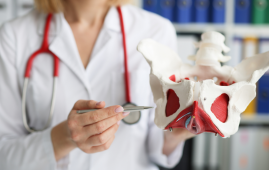

At least in mice, physical activity at the proper time of day appears to be able to improve the amount of fat burned. According to a recent study from the Karolinska Institutet in Sweden and the University of Copenhagen in Denmark, mice that exercised during an early active phase, which is comparable to a morning workout for people, had higher metabolisms than mice that exercised during a time when they would typically rest. The findings are presented in the PNAS publication.
Since biological processes rely on the circadian rhythms of the cells, physical activity at different times of the day can have varied effects on the body.
Researchers at Karolinska Institutet and the University of Copenhagen examined the adipose tissue of mice following a session of high-intensity exercise performed at two points of the daily cycle, an early active phase and an early rest phase, to determine how the time of day at which exercise is performed affects the burning of fat (corresponding to late morning and late evening session, respectively, in humans). The scientists examined numerous markers for fat metabolism and determined which genes were turned on in post-exercise adipose tissue.
Independent of Food Intake
The expression of genes involved in adipose tissue breakdown, thermogenesis (heat production), and mitochondria in the adipose tissue rose during early active phases of physical activity, the researchers discovered, suggesting a faster metabolic rate. Only mice that exercised during the early active period and independently of food intake showed these effects.
According to Professor Juleen R. Zierath of the Department of Molecular Medicine and Surgery and the Department of Physiology and Pharmacology at the Karolinska Institutet, “Our results suggest that late morning exercise could be more effective than late evening exercise in terms of boosting the metabolism and the burning of fat, and if this is the case, they could prove of value to people who are overweight,”
Boost the advantages of exercise for your health
Mice are a well-recognized model for the physiology and metabolism of humans because they share many fundamental physiological processes with humans. However, there are also significant distinctions, such as the nocturnal nature of mice.
The right timing seems to be important to the body’s energy balance and to improving the health benefits of exercise, but more studies are needed to draw any reliable conclusions about the relevance of our findings to humans,” says Professor Zierath.
more recommended stories
 Gestational Diabetes Risk Identified by Blood Metabolites
Gestational Diabetes Risk Identified by Blood MetabolitesKey Takeaways (Quick Summary for Clinicians).
 Pelvic Floor Disorders: Treatable Yet Often Ignored
Pelvic Floor Disorders: Treatable Yet Often IgnoredKey Takeaways (Quick Summary) Pelvic floor.
 Circadian Control of Neutrophils in Myocardial Infarction
Circadian Control of Neutrophils in Myocardial InfarctionKey Takeaways for HCPs Neutrophil activity.
 E-Cigarette Use and Heart Attack Risk in Former Smokers
E-Cigarette Use and Heart Attack Risk in Former SmokersKey Takeaways for Clinicians and Nurses.
 Ultramarathon Physiology: What HCPs Should Know?
Ultramarathon Physiology: What HCPs Should Know?Ultramarathon Metabolism: What Happens to the.
 High-Intensity Training and Oxidative Stress Insights
High-Intensity Training and Oxidative Stress InsightsNew Evidence Linking High-Intensity Training and.
 Sterilized Fermented Beverage for Obesity: New Evidence
Sterilized Fermented Beverage for Obesity: New EvidenceEarly Insights Into a Sterilized Fermented.
 Cardiovascular Risk and Sudden Cardiac Death in Diabetes
Cardiovascular Risk and Sudden Cardiac Death in DiabetesRising Sudden Cardiac Death (SCD) Risk.
 Perinatal Mental Health Challenges Highlighted in New Study
Perinatal Mental Health Challenges Highlighted in New StudyMental Health Challenges in New Parents:.
 Walking Speed Before Hip Replacement Predicts Recovery
Walking Speed Before Hip Replacement Predicts RecoveryNew Evidence Points to a Simple,.

Leave a Comment